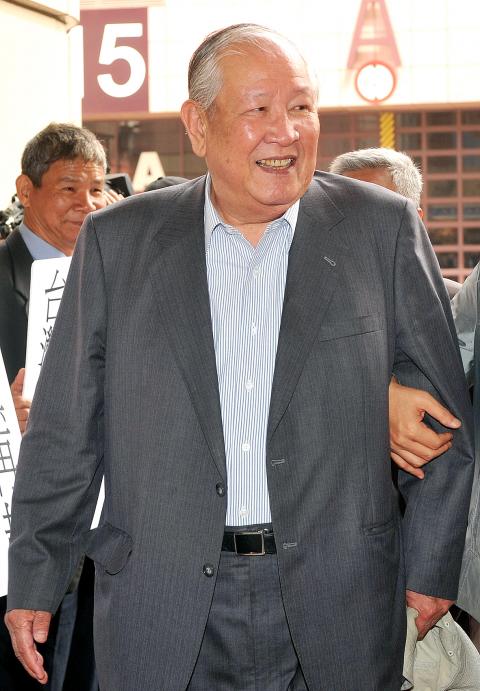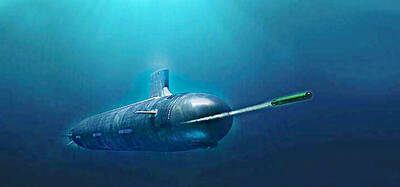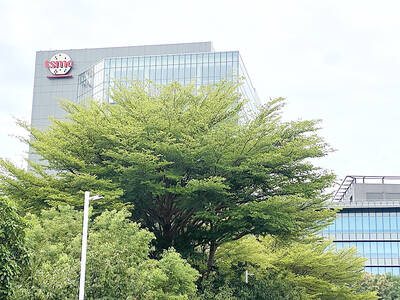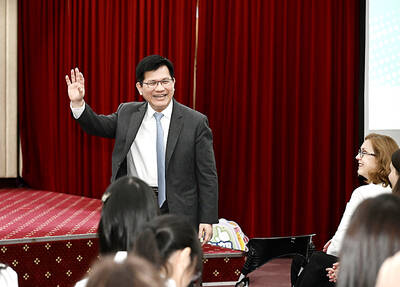Taiwan independence pioneer and World United Formosans for Independence (WUFI) chairman Ng Chiau-tong (黃昭堂) died yesterday from complications arising from sinus surgery. He was 79.
Ng was rushed to the National Taiwan University (NTU) Hospital in Taipei after suffering heart failure halfway through surgery at the Koo Foundation Sun Yat-Sen Cancer Center in Taipei earlier in the day.
Ng died of heart failure at around 11am, WUFI secretary--general Wang Kan-hou (王康厚) said.

Photo: Chien Jung-fong, Taipei Times
Taiwan Nation Alliance convener Yao Chia-wen (姚嘉文) said Ng’s death was totally unexpected.
“The Democratic Progressive Party [DPP] was grief-stricken to learn about Ng’s passing. He has devoted his whole life to Taiwan’s democracy and freedom and his spirit will live with us forever and call on us to fight for the well-being of the next generation. May he rest in peace,” DPP Chairperson Tsai Ing-wen (蔡英文) told reporters at a campaign stop before she visited Ng’s family at the hospital.
Ng’s passing is a “great loss for the Taiwan independence movement,” said Lee Yeng-chyh (李永熾), a history professor.
“Ng has never wavered in his support for Taiwan’s independence. We should remember him for his determination, perseverance and his love for Taiwan,” DPP Legislator Tsai Huang-liang (蔡煌瑯) said.
Tainan-born Ng was known for his decades of dedication to the independence movement. He was also one of the main organizers of the 228 Hand-in-Hand rally, widely seen as a crucial event contributing to former president Chen Shui-bian’s (陳水扁) re-election, when more than 1 million Taiwanese formed a human chain across the west coast on Feb. 28, 2004.
Born in 1932 during the Japanese colonial era, Ng went to Japan for further study after graduating from NTU in 1958. He began participating in the independence movement the following year when he was working on his master’s degree at then-Tokyo Imperial University.
He founded the Taiwan Youth Society, the forerunner of today’s WUFI Japan office, in 1960 in Tokyo. That act led to him being placed on a Chinese Nationalist Party (KMT) government blacklist, thereby barring him from returning to Taiwan.
Ng, who did not return to Taiwan until 1992, had served as WUFI chairman since 1995 and as a presidential adviser during Chen’s DPP administration.
A self-proclaimed supporter of “swift independence” when he was younger, Ng told the Taipei Times in an interview in August that his eventual goal would be “removing the ROC [Republic of China] political system, which was forced upon Taiwanese by the regime of Chiang Kai-shek (蔣介石) after the end of World War II.”
However, he later adopted a more moderate approach, saying that the removal of the ROC system would take time and could not occur without a healthy combination of domestic political development, global trends and, most of all, the consensus and will of the public.
“The ROC is like a cap on the top of our head. If it’s rainy, we’ll have to wear it for now, but we are waiting for a sunny day to take it off,” he said in the interview. “I am very optimistic. The Taiwan independence movement will succeed someday.”

FIREPOWER: On top of the torpedoes, the military would procure Kestrel II anti-tank weapons systems to replace aging license-produced M72 LAW launchers Taiwan is to receive US-made Mark 48 torpedoes and training simulators over the next three years, following delays that hampered the navy’s operational readiness, the Ministry of National Defense’s latest budget proposal showed. The navy next year would acquire four training simulator systems for the torpedoes and take receipt of 14 torpedoes in 2027 and 10 torpedoes in 2028, the ministry said in its budget for the next fiscal year. The torpedoes would almost certainly be utilized in the navy’s two upgraded Chien Lung-class submarines and the indigenously developed Hai Kun, should the attack sub successfully reach operational status. US President Donald Trump

Taiwan Semiconductor Manufacturing Co (TSMC, 台積電) is expected to start construction of its 1.4-nanometer chip manufacturing facilities at the Central Taiwan Science Park (CTSP, 中部科學園區) as early as October, the Chinese-language Liberty Times (the Taipei Times’ sister newspaper) reported yesterday, citing the park administration. TSMC acquired land for the second phase of the park’s expansion in Taichung in June. Large cement, construction and facility engineering companies in central Taiwan have reportedly been receiving bids for TSMC-related projects, the report said. Supply-chain firms estimated that the business opportunities for engineering, equipment and materials supply, and back-end packaging and testing could reach as high as

ALL QUIET: The Philippine foreign secretary told senators she would not respond to questions about whether Lin Chia-lung was in the country The Ministry of Foreign Affairs on Wednesday confirmed that a business delegation is visiting the Philippines, but declined to say whether Minister of Foreign Affairs Lin Chia-lung (林佳龍) is part of the group, as Philippine lawmakers raised questions over Lin’s reported visit. The group is being led by Deputy Minister of Agriculture Huang Chao-chin (黃昭欽), Chinese International Economic Cooperation Association (CIECA) chairman Joseph Lyu (呂桔誠) and US-Taiwan Business Council (USTBC) vice president Lotta Danielsson, the ministry said in a statement. However, sources speaking on condition of anonymity said that Lin is leading the delegation of 70 people. Filinvest New Clark City Innovation Park

DEFENSIVE EDGE: The liaison officer would work with Taiwan on drones and military applications for other civilian-developed technologies, a source said A Pentagon unit tasked with facilitating the US military’s adoption of new technology is soon to deploy officials to dozens of friendly nations, including Taiwan, the Financial Times reported yesterday. The US Department of Defense’s Defense Innovation Unit (DIU) is to send a representative to collaborate with Taiwan on drones and military applications from the semiconductor industry by the end of the year, the British daily reported, citing three sources familiar with the matter. “Drones will certainly be a focus, but they will also be looking at connecting to the broader civilian and dual-use ecosystem, including the tech sector,” one source was